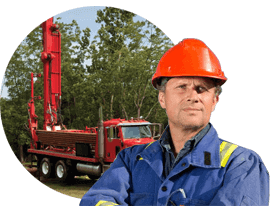Oil and gas injection well drilling has advanced over years to become a more efficient and technically-advanced business. The process is redefining the way various drilling processes are carried out manually. Tools and tabulars with specific torque requirement are increasing and the speed and the combination of tools necessary to perform various drilling task is increasing. To meet these requirements, modern drilling equipment, trained personnel, rig operating system and advance handling equipment has become necessary. Advanced and top performing drilling tools are now available in the market.
Oil and gas injection well drilling is a process that is used to place underground fluid into porous geological formations. Deep underground formations range from deep limestone or sandstone to shallow soil layer. Injected fluids can include brine, wastewater, water, or mixed water with chemicals.
Oil and gas injection well drilling depends on the type and depth of the fluid injected. For instance, well drilling that are used to inject carbon dioxide or hazardous wastes into deep geological formation must be sophisticated. The injection well must ensure protection and are designed to have multiple layers or protective casing and cement. Shallow injection well features simple construction and only used for less hazardous fluids or gausses.

Oil and gas injection wells:
Hydraulic fracturing is an advance technology used to enhance extraction of oil from geological rocks after drilling. This process achieved through injection of a mixture of water and sand plus some certain additive into the deep-rock formation at very high pressure. Just after fracturing, injected fluid returns back to the surface as flowback. At one point in time, flowback needs to be recycled, treated or disposed through underground injection.
Wastewater injection process is totally different with the usual waste fluid disposal. Environmental agencies classify and regulate injection wells into six classes. Injection wells that are associated with oil and natural gas production are covered under class II. Oil and gas drilling companies use hydraulic fracturing to create wells that they use to obtain oil and natural gases from geological formations. The source rocks include coal-beds, tight sandstones and shales. Fluids are injected under high pressure to the source rock to fracture and force oil and gas to flow to production wells.
Cathodic wells:
Wells that are constructed to extract oil and gas or inject fluids include cathodic protection wells. Cathodic protection wells are devices that help to minimize electrolytic corrosion or metallic pipelines, tanks and other facilities in contact with the ground. Cathodic protection is employed in oil and gas drilling industry. The use of cathodic protection is proceeded by the use of the same in pipelines. It is a very successful technique and is used in to mitigate corrosion after the will is in place.
Cathodic wells are widely applied all over the world and the number of well that use is impressive. Most of the cathodic wells are installed to avoid leaking. Cp is a great tool to control corrosion. Cothodic protection helps to mitigate corrosion on the exposed external surface of a well casing. Therefore cathodic protections are only effective on those parts that come in contact with the environment.


